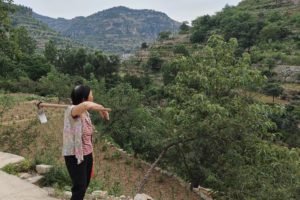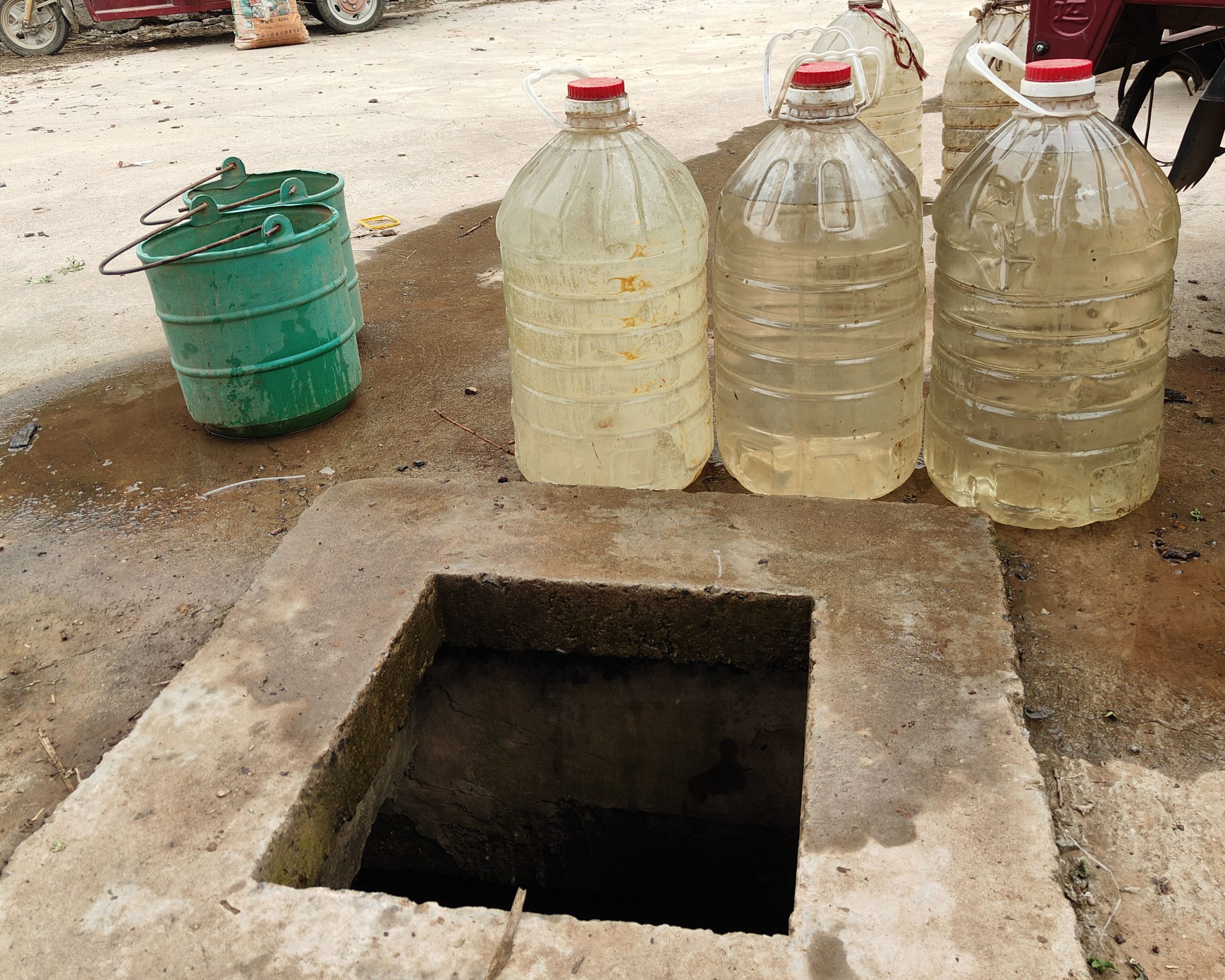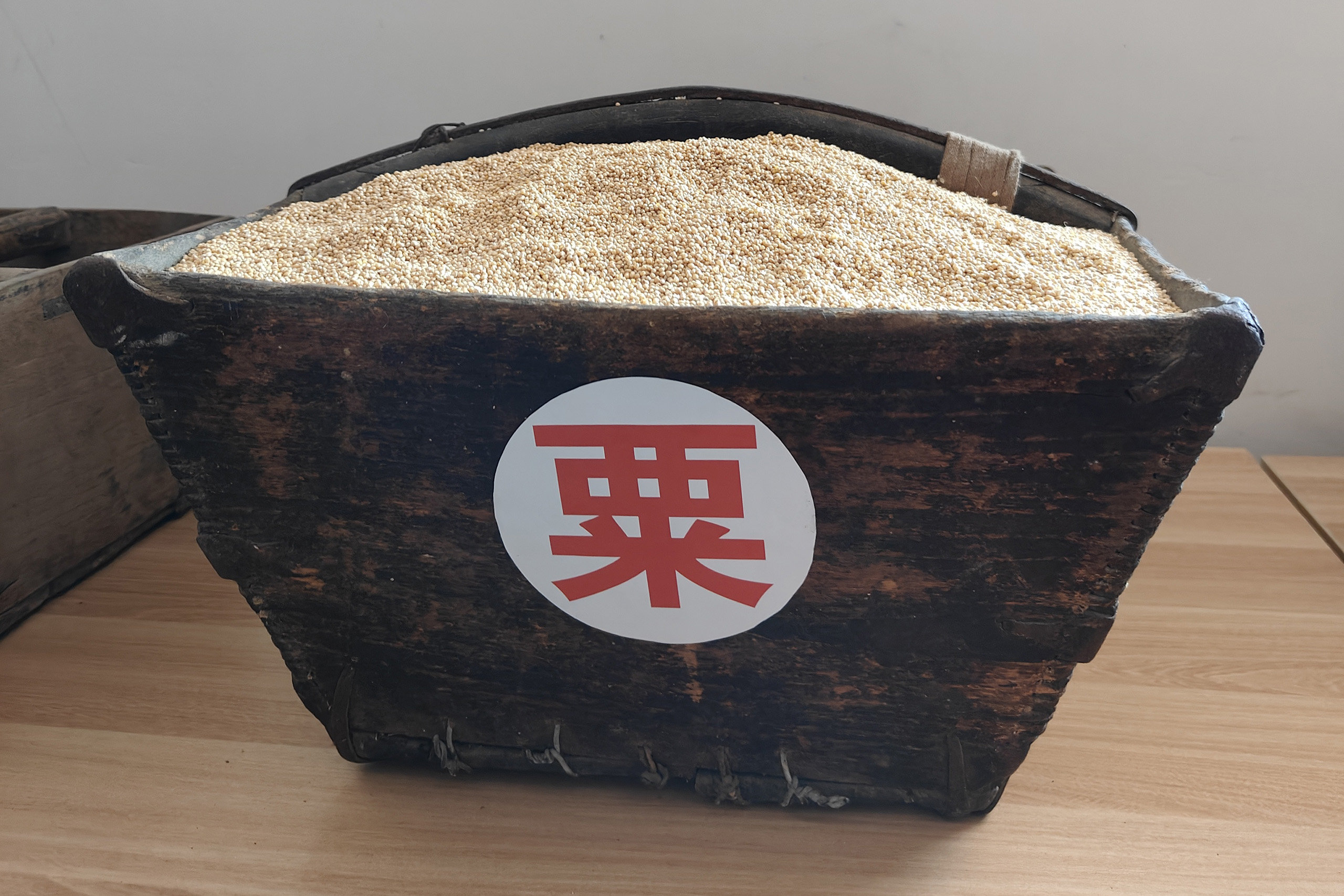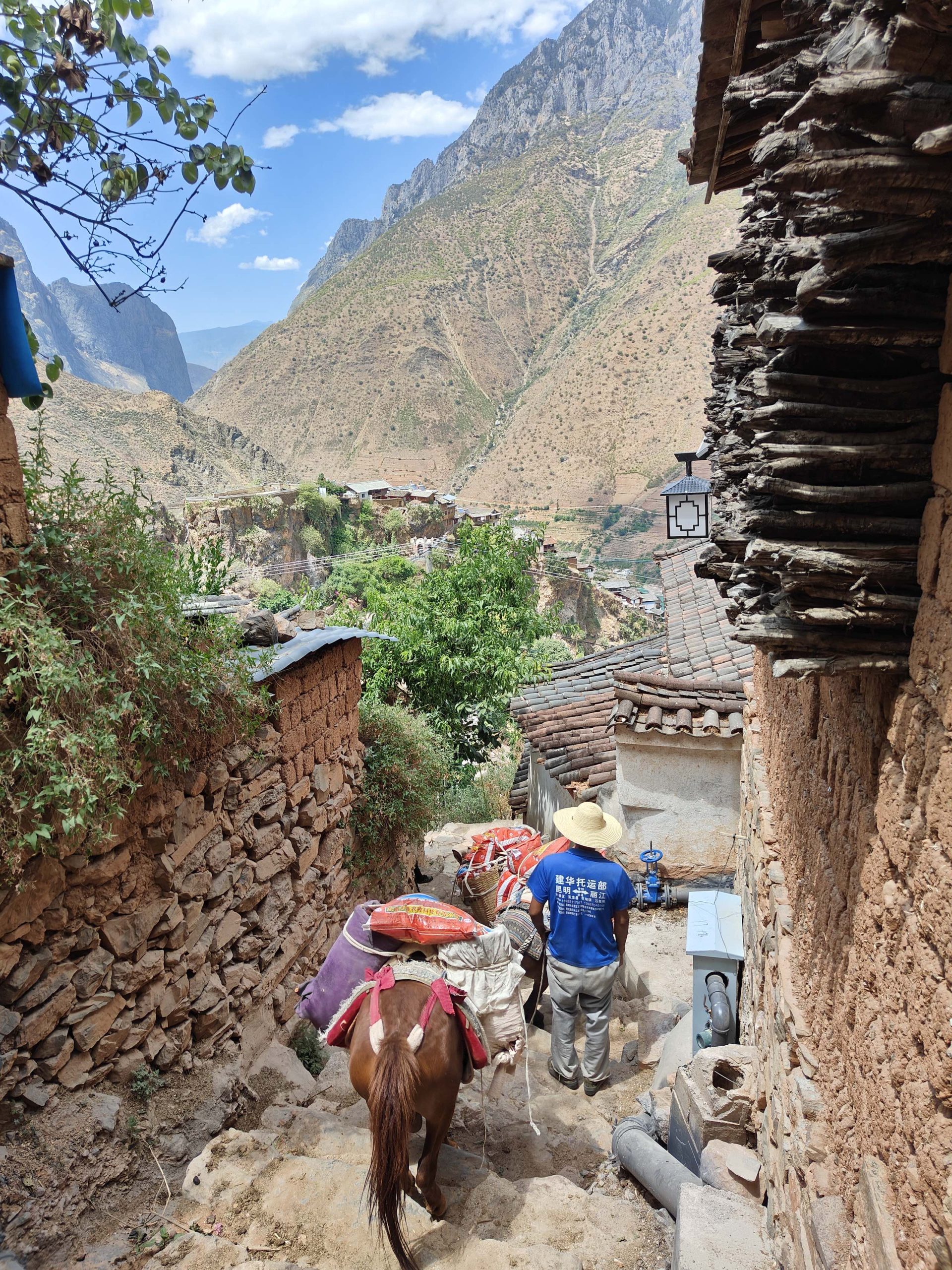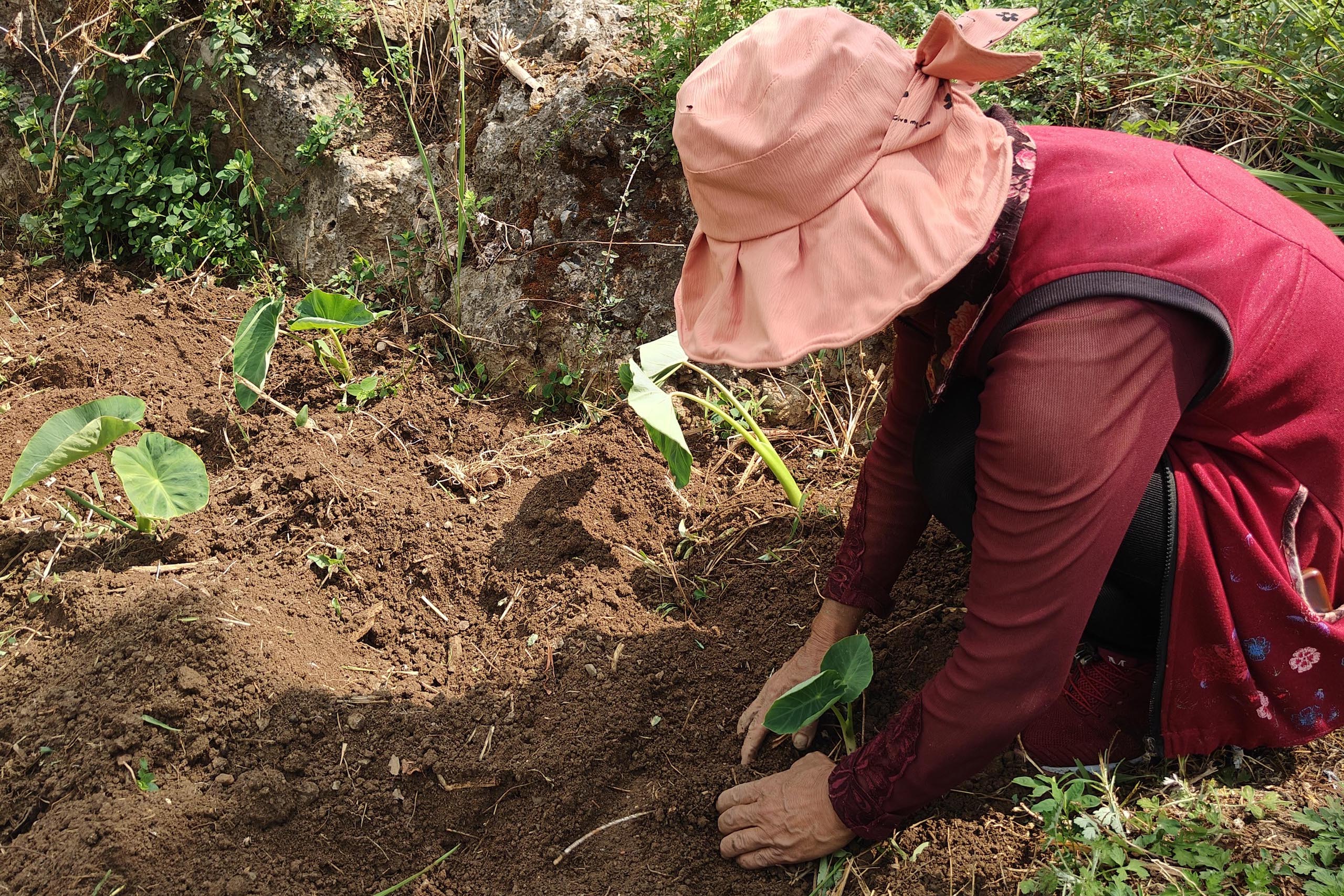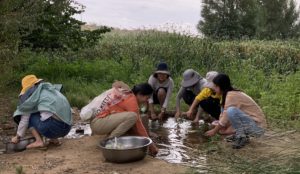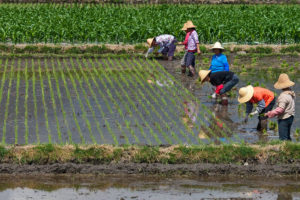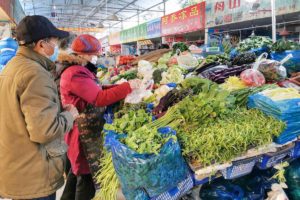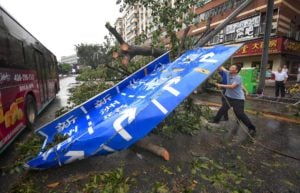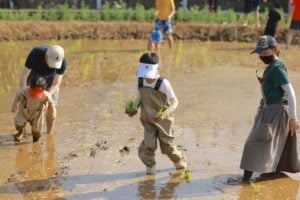Among the dry, terraced fields of Wangjinzhuang in Shexian county, nestled in Hebei’s Taihang mountains, Liu Yurong shows us the 20 local varieties of beans she grows on her family’s land. Beans are the main source of protein here, she explains, because the climate has always been too dry and harsh to raise livestock. Liu Yurong’s family also grows food crops of millet, corn and vegetables, and cash crops of peppers, medicinal plants and walnuts.
Sixteen hundred kilometres away, in the village of Shitoucheng, Yunnan province, Wang Guifen also manages several terraced fields. Here, in the Jinsha River basin, she plants dozens of native crops, including three local varieties of corn, as well as vegetables and fruit trees. In keeping with tradition, she has interplanted soybeans and oil sunflowers under the fruit trees. While in another corner, she grows ragweed for her pigs.
According to current FAO guidelines for conserving local crop diversity, Liu Yurong and Wang Guifen’s practices are textbook. Women in these mountainous regions are already doing conservation agriculture that the international community is urging China to do.
Their actions stem not from any government policy or environmental organisation guidance, but from their own planting traditions. It is a “survival strategy” necessitated by limited land resources and a harsh climate.
Mountains, hills and plateaus account for around 70% of China’s land area, and the farming systems developed on them support almost a third of the country’s population. Agricultural communities in these regions usually have a small amount of relatively barren land. While they are not primary food-producing areas, their systems of farming embed a rich variety of crops, and sometimes livestock, into landscapes of trees and shrubs, contributing to local food and livelihood security. Sustainable mountain farming systems are crucial for preserving crop biodiversity and national food security, particularly in the face of climate change.
Climate-resilient farming in the mountains
Liu Yurong and Wang Guifen’s mountain homes are nothing like the plains of the north-east, which serve as China’s granary. Their scattered arable land and complex ecological environments mean they are often overlooked by policies.
At a 2018 FAO meeting on mountain agriculture, experts pointed out that a third of the world’s mountain population still faces food insecurity. These areas are biodiversity hotspots, and sensitive to climate change, so more attention should be placed on improving nutrition and food security there, and on promoting sustainable agriculture.
Restricted by geography, mountain communities have long been at the fringes. They generally don’t benefit from agricultural subsidies or extension help. This compels them to develop their own agricultural systems based on their deep knowledge of the local climate and natural resources.
For hundreds of years, the mountain residents of Shitoucheng and Wangjinzhuang selected the best seeds from the annual harvest and used these to breed local varieties. These possess genetic traits that are adapted to the local climate and soil, unlike most high-yield varieties. To safeguard their livelihood, local farmers generally also practise intercropping, and mixed planting of food and cash crops. Under these kinds of diversified growing systems, if one crop fails or yields decrease, farmers still have something to reap.
In recent years, climate change has made extreme weather the norm. In 2022, the duration of high temperatures and drought in southern China smashed the 60-year record. Since the beginning of summer 2023, many areas in northern China have experienced continuous drought and temperatures in excess of 40C, posing a serious threat to autumn crop production.
Faced with the grim situation of normalised extreme heat and drought, and the intensification of crop disease and pests, China needs to improve the resilience of its agriculture to climate change. The mountain-farming wisdom and systems represented by Wangjinzhuang and Shitoucheng offer small and large farms in the country important resources and knowledge to this end.
Agrobiodiversity: A survival strategy
He Xianlin, senior horticulturist and former deputy director of the Agriculture and Rural Affairs Bureau of Shexian county, Hebei province, told China Dialogue: “The stone terraces in Wangjinzhuang’s mountains have both sunny and shady sides, as well as high and low areas. This kind of landscape diversity allows local agriculture to consist of all kinds of crops which are not affected by the whims of weather.”
In Chinese mountain farming, the arable land area is small and consists mainly of terraced fields, which limits local agricultural and economic development. Yet, the complex ecological environment of the mountains makes these farming communities hotspots for agrobiodiversity.
In Wangjinzhuang, for example, while there are only 600 square metres per person, a 2018 survey found over 170 traditional plant varieties, including grains, beans, vegetables and medicinal plants.
The conditions are similar in Shitoucheng. Agriculture in both places has adapted and developed in an environment lacking natural water sources and precipitation. Wangjinzhuang relies on collecting rainwater, while Shitoucheng relies on a long-established irrigation system diverting nearby river water to the village. People rely on the diversity of local crops and traditional varieties that are adapted to complex environments. They maximise production efficiency through crop rotation interplanting and crop mixing.
Shitoucheng’s Wang Guifen also farms in the traditional way of the Naxi people. This means “planting corn, beans, sweet potatoes and pumpkins together,” she explains. “Thus, even if disaster befalls one crop, the others will still be able to feed the family.”
Likewise, local farmers in Wangjinzhuang generally interplant corn, pumpkin and beans, and also pepper trees beside the stone terraces. The trees not only boost incomes, but their root systems also help curb soil and fertiliser loss from the terraces.
The local practices of these smallholders serve to build and maintain a sustainable mountain farming system.
In Wangjinzhuang and Shitoucheng, there are many farmers like Liu Yurong and Wang Guifen, who continue the custom of growing traditional varieties and retaining seed. Every year after the harvest, they save seeds to sow themselves the following year, and to share with others in the village.
The villagers also collect local plants and seeds and manage the community seed bank. Farmers may take seeds for planting, so long as they return double after harvesting. Compared with the ex situ conservation conducted by international seed banks, those of Shitoucheng and Wangjinzhuang provide a foundation for local people to carry out conservation in situ, and build sustainable farming communities.
The local crops, in their abundant variety, are not just a germplasm resource for improving agricultural resilience and climate change adaptation. They are also the bedrock of people’s livelihoods and the carriers of social relations and cultural value systems. In these two mountain villages, traditional crops move from the seed bank, to farming and harvesting on the terraces, and finally to local dining tables. This food system is embedded in people’s daily lives and interactions. Its planting knowledge, cooking methods, sayings and cultural customs, all create an ongoing, comprehensive agricultural knowledge system.
Mountain agricultural systems have evolved over millennia, and continue to change. Local farming traditions are also impacted by socioeconomic shifts triggered by climate change and globalisation. In the face of these challenges, mountain dwellers are changing the plants they cultivate and their farming methods.
Changes to mountain crops and livelihoods
In Shitoucheng, local livelihoods used to be principally sustained by rice. For hundreds of years, the Naxi people worked with the terrain to form terraces, built irrigation systems to draw water, and developed a system for cultivating rice in the mountains which suited the climate of the Jinsha River valley.
Villagers still remember when every family used to plant and harvest rice, and neighbours, relatives and friends all helped each other out in convivial scenes. These days, the sight of everyone working, chatting and singing has disappeared. Since 2016, rice planting has basically left the village.
Villager Zhang Xiuyun said: “We’re trying to bring back local rice cultivation, but it’s difficult to control bird damage when growing on such a small scale.” When her rice ripens, it attracts nearby sparrows that decimate the harvest.
After rice had stopped being grown, the originally wet terraces dried out, and the residents of Shitoucheng gradually adopted a new way of life based around corn, wheat and other dry crops. In terms of variety selection, the tasty but low-yield traditional grain varieties were usually eaten at home, while the high-yield, hybrid varieties were sold or used for animal feed. Rice may no longer be grown, but it’s still the daily staple, and villagers now buy it from open-air markets or local shops. During the Covid-19 pandemic, many migrant workers were stuck in their hometowns. They had no food at home, but even going to buy some from the market was difficult. Food security in the once self-sufficient village of Shitoucheng was at risk.
The struggle for food self-sufficiency is linked to climate change in the river valley, particularly the delay to the rainy season and the intensification of drought in recent years, which affects the people of Shitoucheng’s livelihood decisions and planting choices. But the direct cause of the decline of traditional rice farming is labour shortages as large numbers of young people leave to work elsewhere.
The local saying is that men must take the “toil road” – working away from home to support their family – while women shoulder the housework and most of the farm work. The village school closed many years ago, and parents were forced to move with their children to the nearby city of Lijiang or another town, where they could oversee their schooling while working. Most of those who remain in Shitoucheng are over 50 and predominantly female.
Shifting crops and shrinking labour
Wangjinzhuang faces the same loss of an agricultural labour force and intensification of extreme weather like droughts and floods from climate change. The difference here, is that the once-dominant wheat has disappeared, while millet, the traditional staple crop, is still important for local livelihoods.
“Wheat farming spread locally in the 1950s and 1960s, but by 2000 farmers had all but stopped growing it,” He Xianlin said.
This is mainly due to the amount of water and fertiliser wheat requires. With the thin local soil and scarcity of water, even wheat planted on the very best terraces only produce a small yield per square metre. Traditional millet, by contrast, is resistant to drought and tolerates barren soil. It has therefore continued to be grown.
However, in recent years even the millet acreage has shrunk. In traditional farming, millet requires at least three cycles of ploughing and weeding to ensure its texture and taste. This labour-intensive crop is challenging for a shrinking and aging agricultural workforce.
Women as the main workers and protectors of crop diversity
There are many middle-aged and elderly women like Liu Yurong and Wang Guifen in Wangjinzhuang and Shitoucheng, who take the lead on conserving traditional plant varieties.
For a long time now, their roles in both the home and the fields have allowed them to forge inseparably close connections with the natural environment. They have become stewards and guardians of biodiversity, inheritors of agroecological knowledge and cultural traditions.
Liu Yurong’s knowledge isn’t just about the traits of local beans and methods for cooking them, but also the properties of local wild plants. During our visit, she served a medicinal forsythia tea that she’d gathered and roasted herself.
Zhang Xiuyun is another conserver of local seeds in Shitoucheng. As she shared her story of taking part in seed cultivation, she selected seeds to be used the following year. Hearing a cuckoo call from a nearby tree, she suddenly said: “Listen, the cuckoo’s song sounds hoarse. It’s likely to rain.”
During the many years of looking after their farms and their families, these women have accumulated vast local environmental knowledge.
At the same time, rural women have become the main force for agricultural production. They bear the heavy responsibility of ensuring familial food security while also being primary caregivers. These multiple roles have created a unique predicament. Zhang Xiuyun sums it up vividly: “It’s the choice between seed and son.”
Would you choose traditional crops, which need painstaking cultivation? Or a child who works in the city and needs help with childcare? For the younger generation of women who work the land in Wangjinzhuang and countless other mountain regions in China, the choice is between children, parents and traditional crops, or leaving to find work elsewhere.
The examples of Wangjinzhuang and Shitoucheng show us how in mountain communities, women who stay working on farms have made major contributions towards maintaining agrobiodiversity. Under global warming, in the building and preservation of sustainable mountain communities, even more attention must be paid to the dilemma of these women as they face climate threats and other changes to their livelihoods. Their hard work and wisdom in promoting conservation agriculture practices offer important insights to other farming communities in China and beyond.
This article is part of a Wilson Center-Ohio State University Cultivating US and Chinese Climate Leadership on Food and Agriculture project. The original article can be found here.
